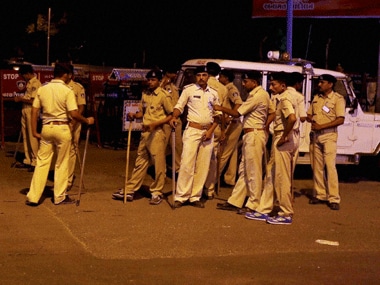Visuals of policemen going berserk in Ahmedabad following the massive rally by Patels once again caused concern about the state’s inability to deal with the law and order situation in a professional manner. Many in Gujarat’s ruling establishment are at loss about the state police’s retaliatory action against the Patels. The manner in which the constabulary reacted after the Patidar community rally in Ahmedabad — chased and attacked suspected Patel activists and defied basic training of the policing, was shocking. [caption id=“attachment_2412642” align=“alignleft” width=“380”]  Representational image. PTI[/caption] The Gujarat High Court made strong observations on the incident and virtually indicted the police administration, “CCTV footage shows police is involved in damaging private property, if police does so what is the difference between rioters and protectors… why was action not taken against the responsible cops. What message does it give to people? Top authorities (of the state government) should take it very seriously so that public confidence can be restored in police.” The High Court has since then directed the police to lodge an FIR on the alleged custodial death of Shwetang Patel. Based on his mother’s complaint, the police is now obliged register the case. CID (Crime) has been directed by the Court probe the case. Shwetang was allegedly picked up by the police from his residence in Bapunagar area. He later died in the custody due to severe beating by police on Tuesday night when the violence broke out. Shwetang’s unfortunate death has exposed police excesses while handling the two day state-wide unrest in which ten persons were killed, mostly in the police firing. The state government’s order to constitute a judicial inquiry in the case is indicative of a tacit admission of the same. However, the police’s handling of the situation in last few days raises a much bigger question — has the Gujarat Police not learnt any lesions in mob management and containing a riotous situation, particularly since what happened in 2002? Perhaps Gujarat is one of the states where people/police ratio is the lowest: one police constable for 115 persons. In neighbouring Maharashtra and southern states, this ratio is far better. In the past five years, the state has launched a massive drive to recruit 15,000 constables to improve the ratio. Ironically, most of the constables come from the OBC section as they find employment in the police force more lucrative than agriculture related work. A senior IPS officer involved in this recruitment drive admitted that Patels are much less in strength in the police force as compared to their population ration. “Last year, we found hardly 2 percent of Patel applicants for police constables,” he said. Obviously, Patels who form an affluent section of the Gujarati society are attracted more towards industry and agriculture than government jobs. According Professor Purshottam Marvania of Saurashtra University, the situation is now gradually changing as Patels are feeling marginalised on account of adverse impact on small and medium scale enterprises (SME) in the state. The crisis in the SME has hit the Patels hard and forced them to look for employment in government jobs, particularly in the police. “This situation has created social friction within the state and allowed the anger to be accumulated over the years,” he said while explaining the situation. But what made the situation worse is the conduct of the police which was supposed to get training to act in a restrained manner. Police officers in Gujarat admit that most constables in the state undergo training at the time of recruitment. They are hardly given any course on crowd management. But Gujarat is no exception on this count. Inadequate training to constabulary about basic policing principles is prevalent all across the country.
Visuals of policemen going berserk in Ahmedabad following the massive rally by Patels once again caused concern about the state’s inability to deal with the law and order situation in a professional manner.
Advertisement
End of Article


)

)
)
)
)
)
)
)
)



